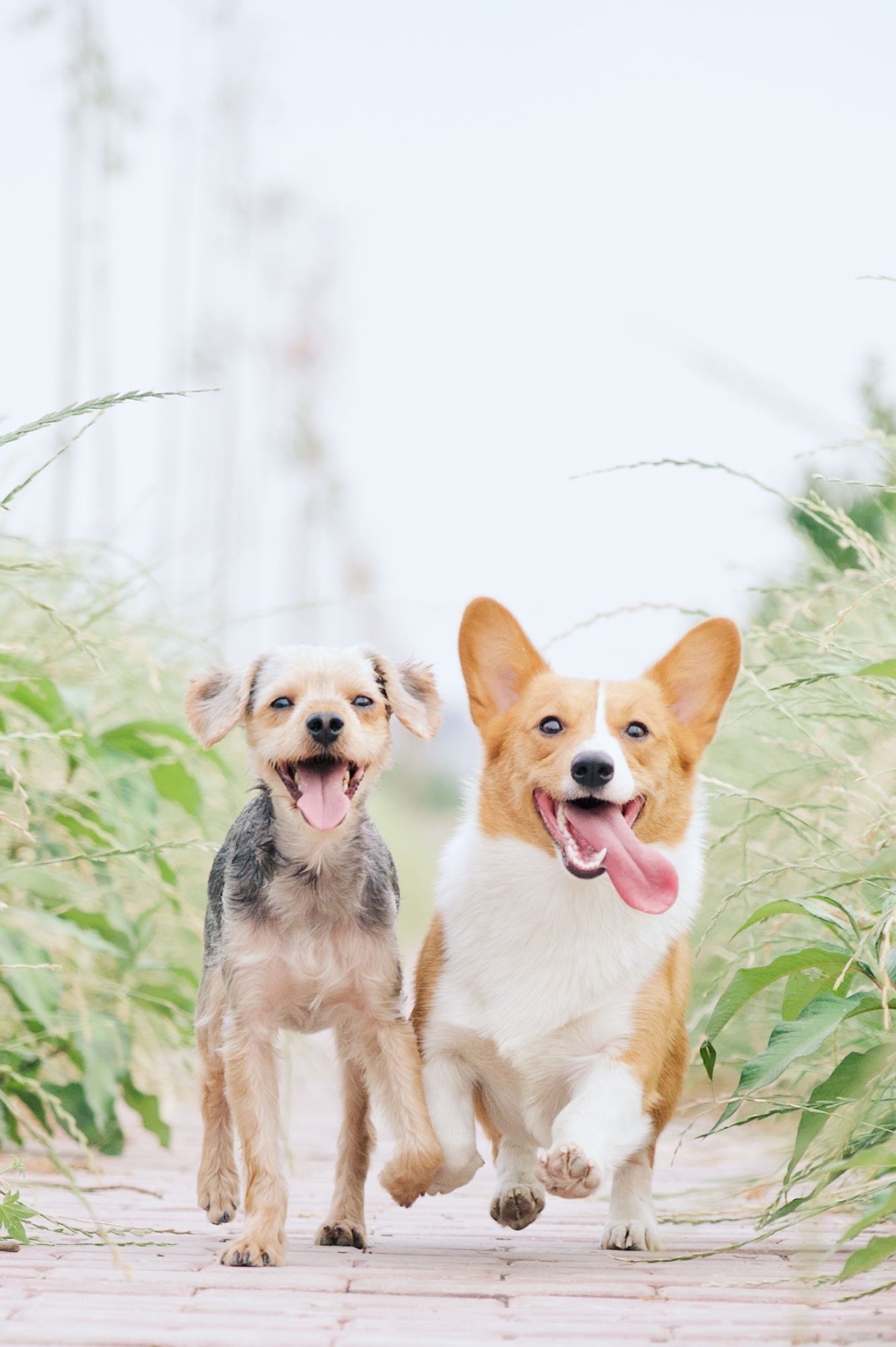Why positive training works best with your dog - by Lisa Tenzin-Dolma
Positive training methods involve using a gentle, perceptive approach that can strengthen the bond of trust between you and your canine companions.
From the 1800's until recently it was thought that dogs would be more likely to be compliant if force and coercion were used. To understand why this line of thinking came about, it's important to take a very brief look at wolves, the creatures from whom the dogs at your feet originally descended over 14,000 years ago.
Early research into the behaviours of dogs through studying wolves appeared to confirm that there was a clear structure within their social groups, with the leader, or 'alpha' dominating and intimidating those beneath him. Their nature did indeed seem 'red in tooth and claw', with a great deal of conflict and vying for supremacy taking place. This research has now been proven to be inaccurate and very flawed, as it was carried out on packs of captive wolves whose behaviour is very different to how it would be in the wild. These far-ranging creatures, whose packs are normally made up of family groups, were confined in a comparatively small area with unfamiliar wolves, and the immense stress they were subjected to in such an unnatural environment resulted in behaviours that are not seen in the wild.


The latest research has shown that the true relationships between wolves in a group are based on cooperation and collaboration. The parents are the wise, benevolent leaders of the group, just as human adults make the most important decisions that will affect the survival and wellbeing of the family. This new knowledge has led to an increase in studies into dog behaviour, and the results have revealed that dogs are not wolves in different fur coats. They have evolved alongside us, their nature is unique, and they have added their own contributions to our evolution as a species.
Unlike wolves, who are very self-sufficient creatures, dogs have long been bred to look to us for guidance, to be dependent on us, and to use their innate intelligence and skills in cooperation to become our helpmates as well as our fireside companions. This new understanding has changed the approach towards dog psychology, training and behaviour, and has opened the portal to a new understanding that is transforming human-canine relationships.
The latest research has proven that dogs respond best to an approach that involves kindness, understanding, compassion, and positive reinforcement (praise and rewards) for desirable behaviours. Although it is possible to force a dog to comply with an instruction, the dog will be cooperating through fear, not because he wants to do as you ask. Harsh 'dominance' methods, such as throwing a dog onto the ground and pinning him down, or jerking hard on the leash, are based on the idea that the owner should be 'alpha dog' and assert his or her authority. This is unnecessary and misguided. Dominance methods may seem effective in the short-term because the unwanted behaviour stops - but these often lead to the issue being driven deep below the surface, only to emerge in a potentially more dangerous form later on. Ultimately the loss of trust and respect that ensues from using harsh methods has a high cost. Surely this isn't the relationship you would want with your dog - or with anyone.
The new, far more effective, methods involve teaching dogs through motivating them to want to pay attention to you and to follow through on what you are asking of them. The relationship then becomes one of teamwork and is far more enjoyable and beneficial for all concerned.
The most harmonious relationships are built on a foundation of trust, mutual respect and consideration. When this occurs, there is a willingness to observe and listen, to choose to follow through on requests. Dogs are now known to feel and display a wide range of emotions that appear to correspond to our own. Love, anger, sadness, fear, joy, grief, anticipation, loneliness, happiness, and the ability (and desire) to form strong, enduring bonds are as common in dogs as in ourselves. Fortunately for us, dogs want to be with us. They understand that we are a different species, and still they choose to share their lives with us.
There are numerous ways in which to use positive methods in order to train dogs. All of these focus on positive reinforcement, which involves rewarding desirable behaviours. As dogs (like us, and other species) prefer to repeat behaviours that have previously brought a reward, in terms of feeling good, or receiving praise and/or food, this has the effect of conditioning the behaviour. Essentially, positive reinforcement works through setting up new patterns of behaviour through conditioning, rewiring the connections within the brain. This can be further reinforced by using a system such as a clicker, which 'marks' the moment the desired behaviour occurs and is immediately reinforced with a food or toy reward and praise. Eventually, when the dog has learned the new behaviour, the food or toy rewards can be tailed off, though praise should always be given.
The method I developed is called 'Sympatico', which is taken from the Italian word 'simpatico', meaning 'in sympathy with, in harmony with'. At the root of the Sympatico method is the development of trust, that essential component of a happy relationship. To earn trust, we must prove ourselves to be trustworthy. When we have achieved this, we gain our dogs' respect and willing cooperation. Trust and mutual respect quickly develop when we make an effort to understand our dogs; through observing and listening to what they are communicating, and by acting appropriately in accordance with this.
Dogs have innate emotional intelligence, which they use to keep themselves safe. They are like sponges, sensing and absorbing the emotions that we are feeling - even if we try to keep these hidden. Deep down, where it really counts, you can't lie to your dog - he'll always sniff out the truth. Our bodies release chemical messengers when we feel loving, or scared, or angry, and our dogs can smell these subtle changes in our body chemistry. We can use our own emotional intelligence to 'tune in' to what our dogs are feeling and thinking. This allows us to pre-empt and therefore defuse uncomfortable situations, and to build on developing sensations of comfort, ease and relaxation within our dogs. A happy dog is far more inclined to want to be around us and comply with requests than a stressed dog.
Although dogs use a verbal language, their main form of communication is silent, taking place through body language and signals. When we learn to 'speak dog' and to use our own bodies and tones of voice to communicate effectively with them, our dogs visibly relax - and when they relax, they pay attention to us. It's good to feel understood! Your dog's body language would need a book, rather than an article, to explain, but it's likely that you already understand some of this intuitively. A relaxed dog has soft, slightly narrowed eyes, a loose jaw and open mouth, floppy ears and a liquid posture. A nervous or frightened dog lowers his body to show he intends no threat. He lowers his head and averts his eyes, often turning his whole head away. His tail slips down, his ears tuck back, and he may step backward, or sit or lie down. The forehead furrows if he feels concerned or worried. The face and body tenses, the eyes widen to look larger, the mouth purses forward and the ears go flat to the skull if he feels angry. A happy, excited dog holds himself upright. His ears prick up, his tail wags, he may prance or dance, or open his mouth with the lips stretched back in a canine smile.
Being able to 'read' your dog allows you to gauge his mood and his responses. Using your own tones of voice and body language to communicate gives him the ability to 'read' you more clearly, too. A light, happy tone of voice is a clear invitation to your dog to approach. Harsh tones warn him to stay away - so calling 'Come!' in a bright, excited tone of voice is far more effective for teaching reliable recall than shouting it in an annoyed tone. Rewarding him with praise and a treat as soon as he comes to you (even if this doesn't happen instantly) sets up a pattern so that he soon comes to you every time you call him.
Your body can help you to develop trust with your dog, when you understand what is and isn't considered polite in dog language. Looming over a dog, invading his space, and moving your hand over his head towards the back of his neck can all be interpreted as threatening, and are therefore not conducive to gaining his trust. Standing back and allowing him to come to you, stroking the side of his face or neck, and keeping your body low and movements fluid all show your dog that you are being polite and considerate. He'll thank you for it.
The connection and mutual bond between a dog and a human can be a thing of beauty, grace and harmony. That ability to feel in accord, to experience the fluidity of easy flow in mutual communication, to dance to the same inner music, is richly rewarding, revitalising and uplifting for all involved.
This article was originally written for Intelligent Horsemanship Magazine.
